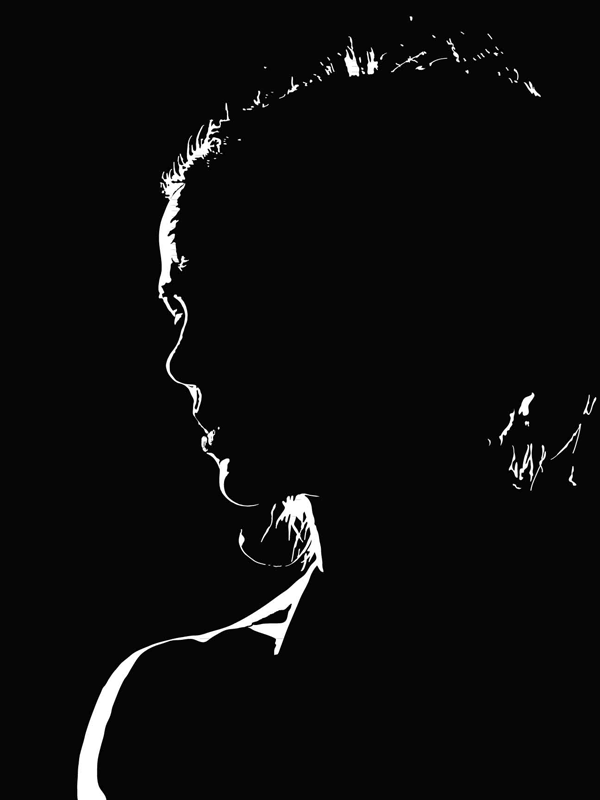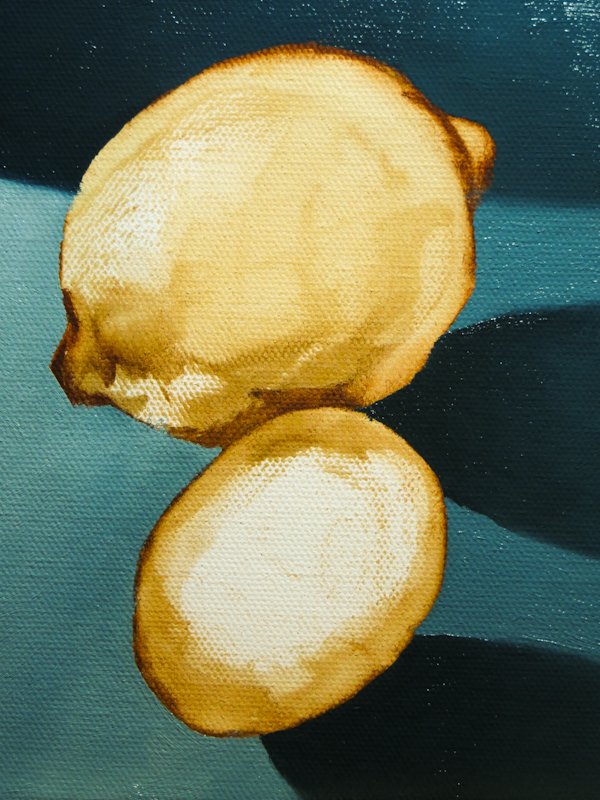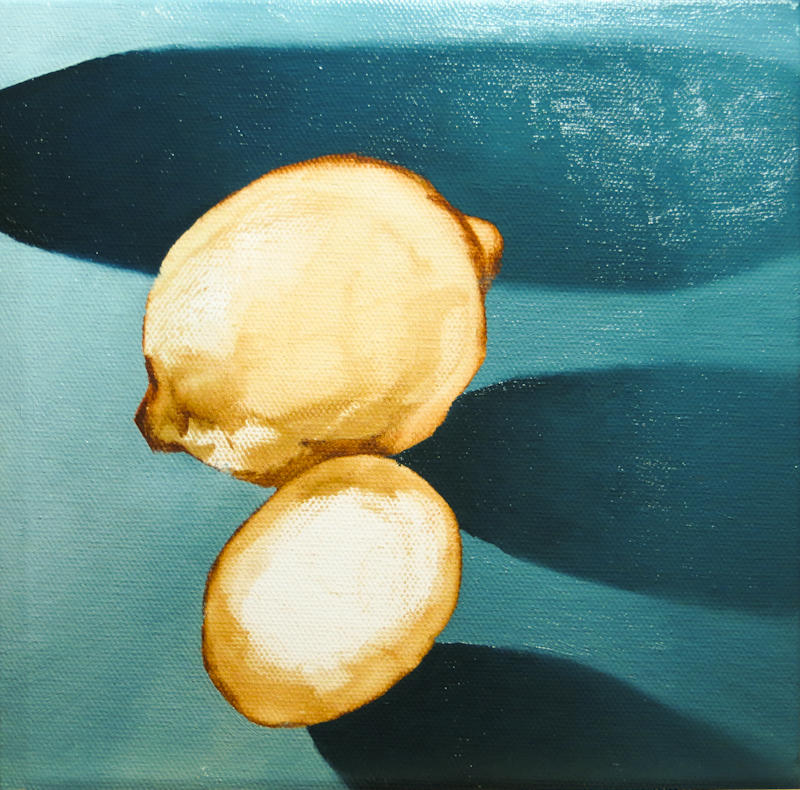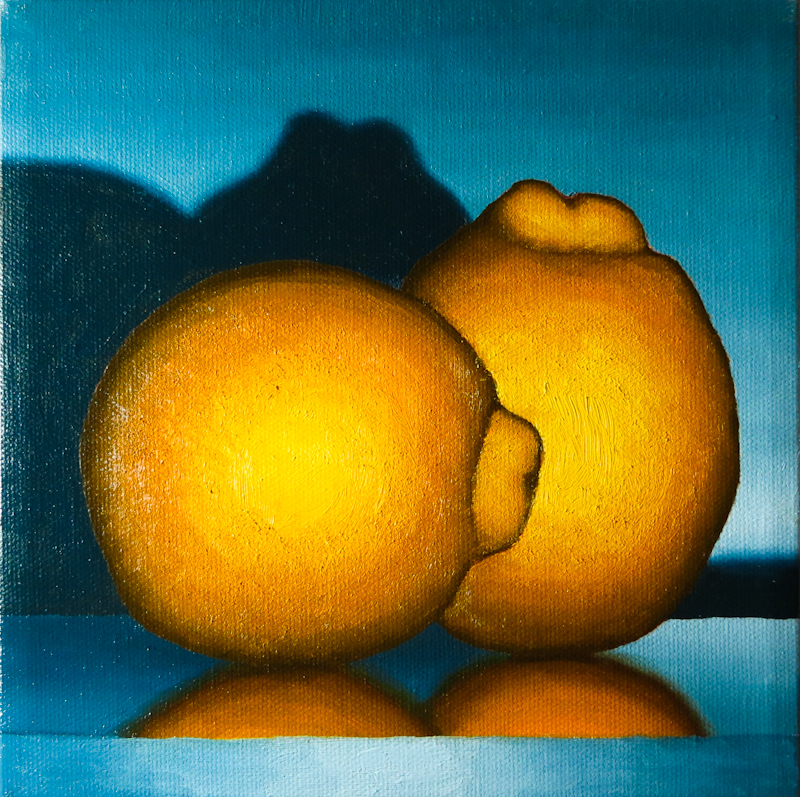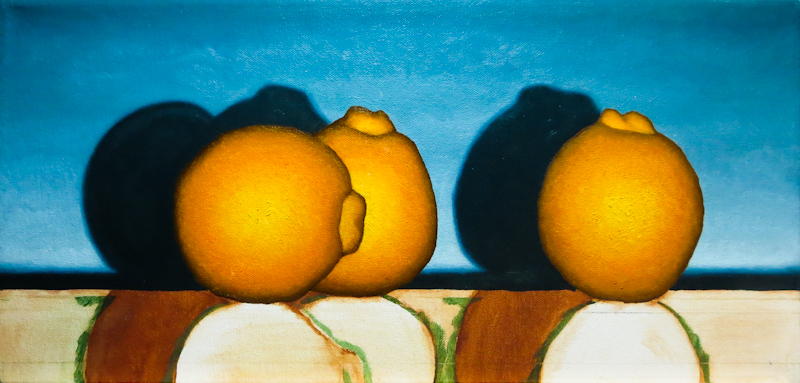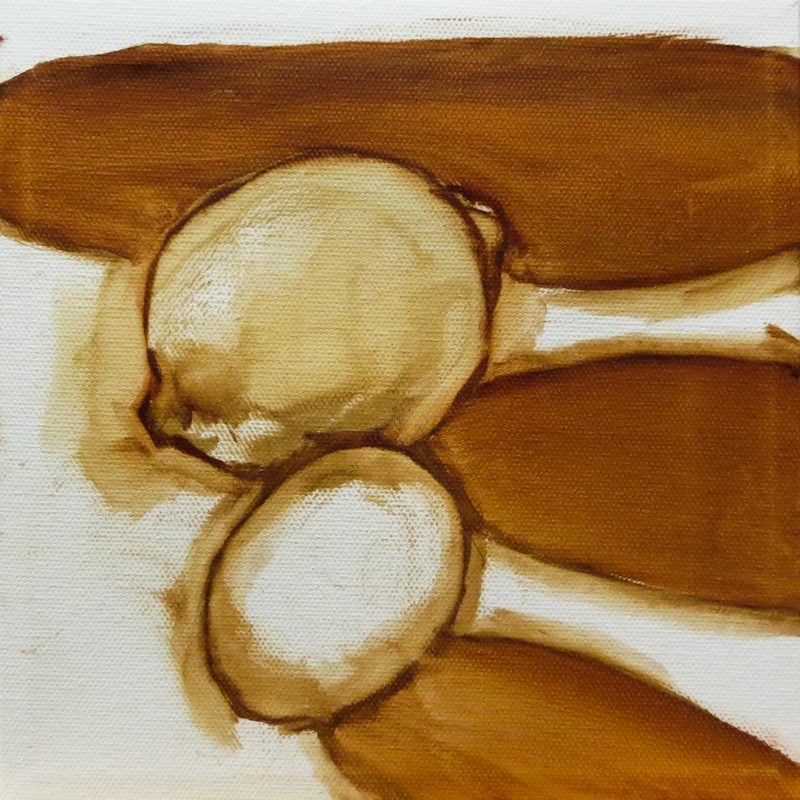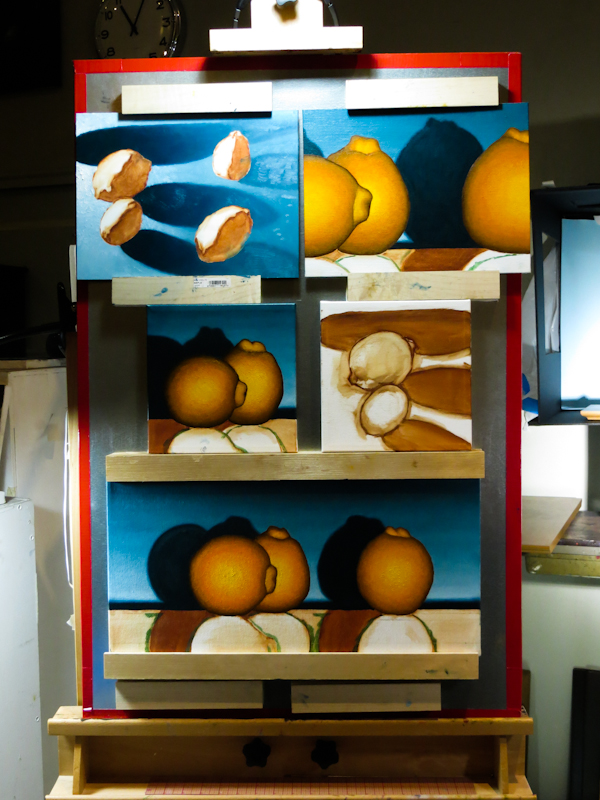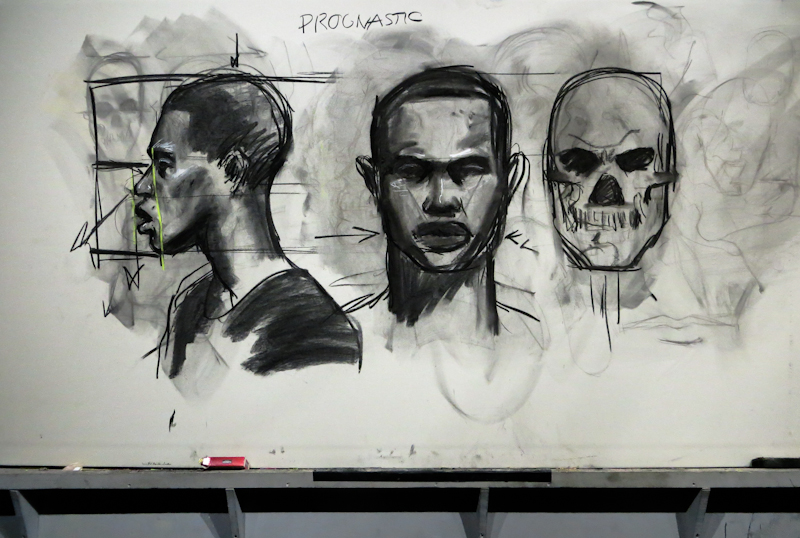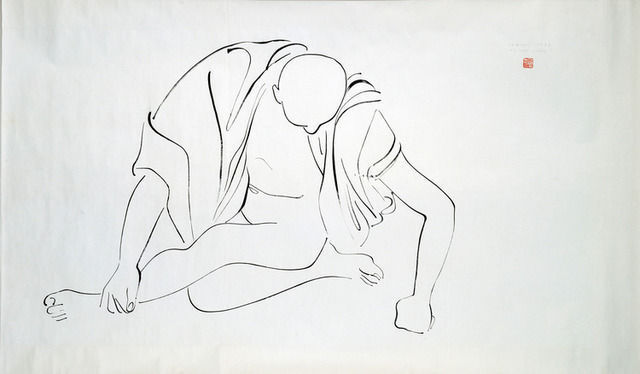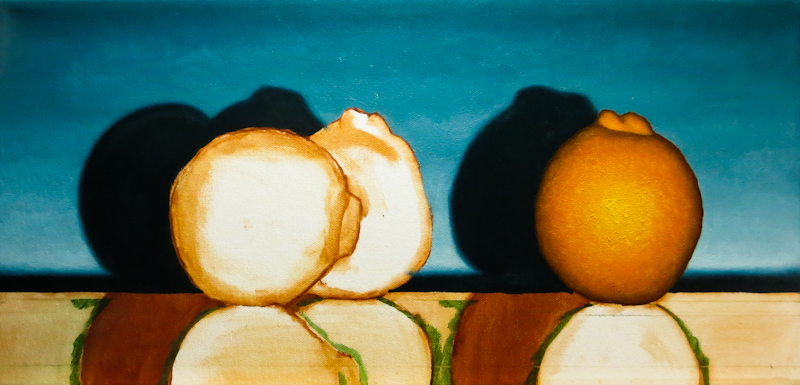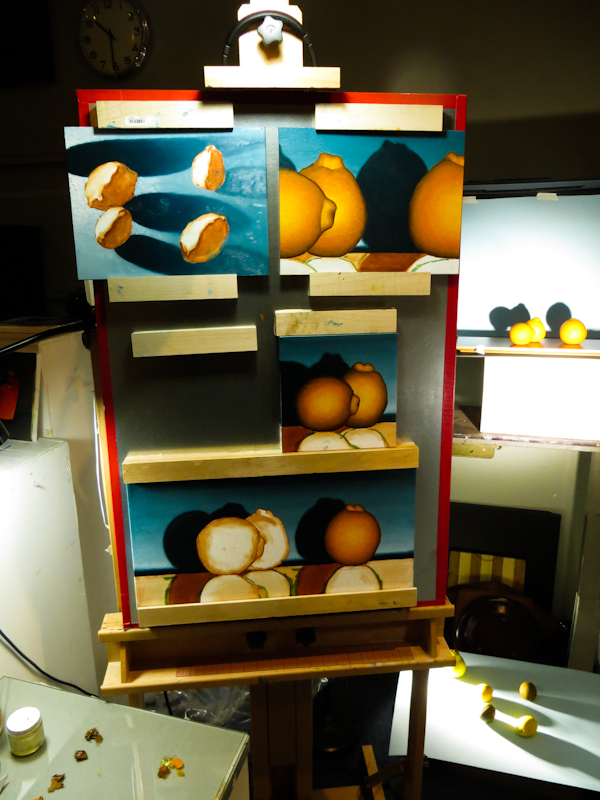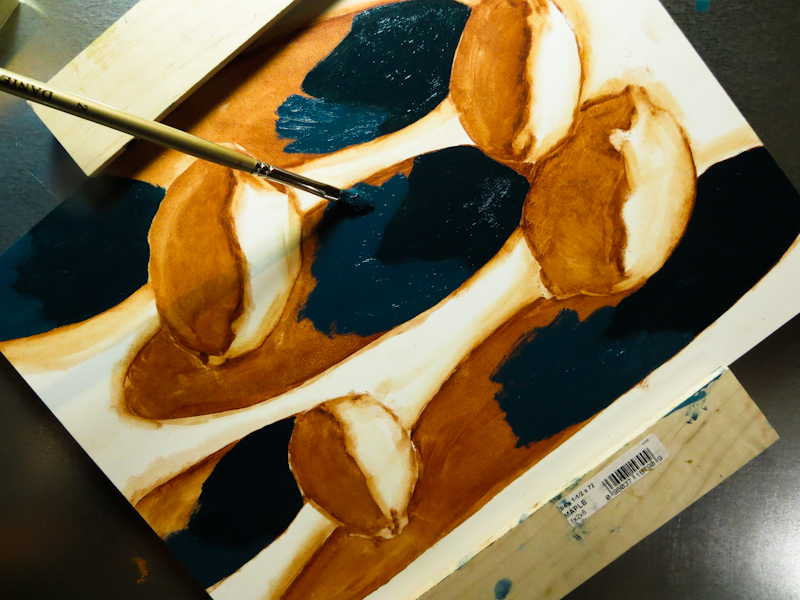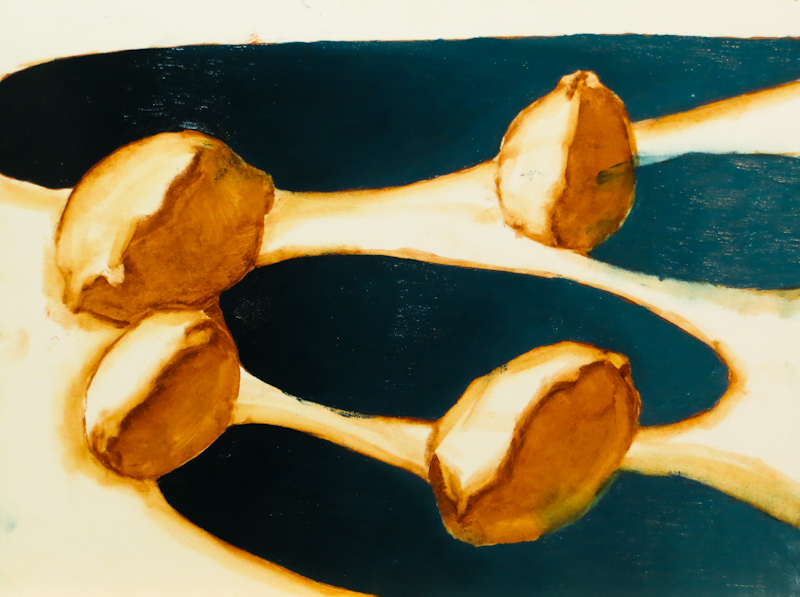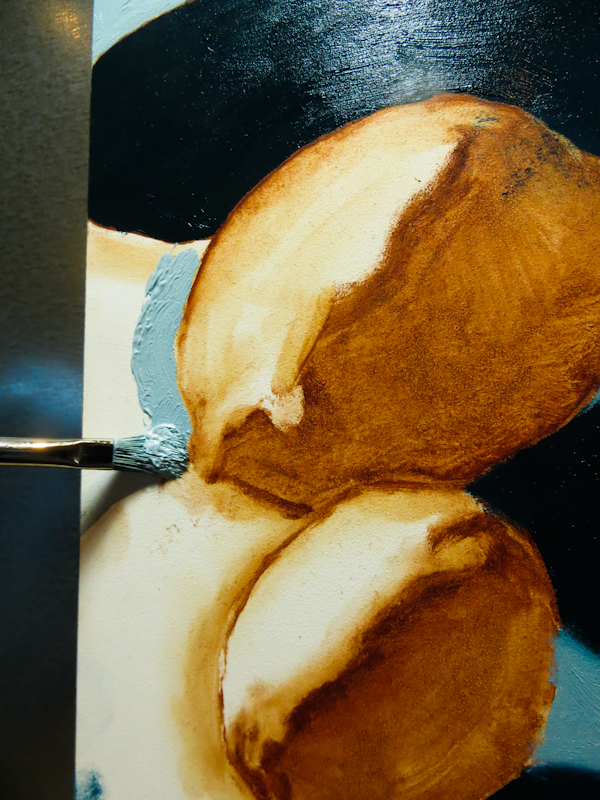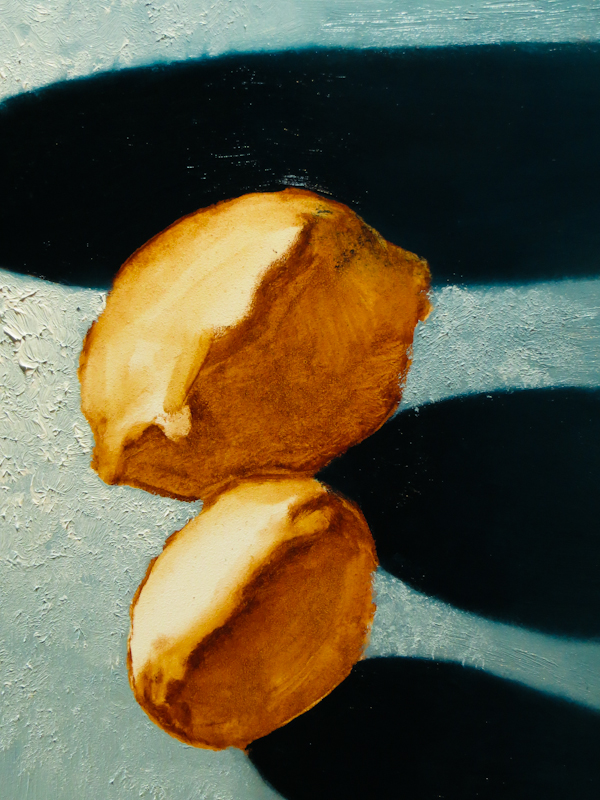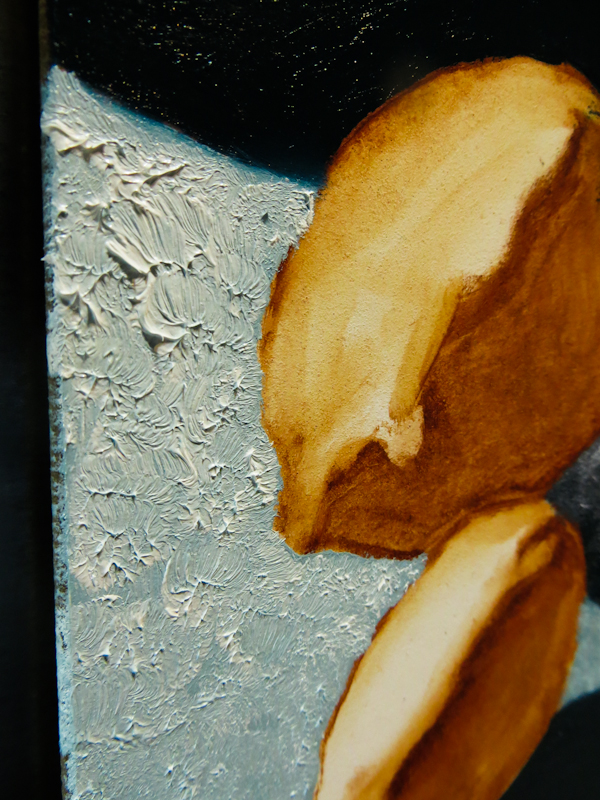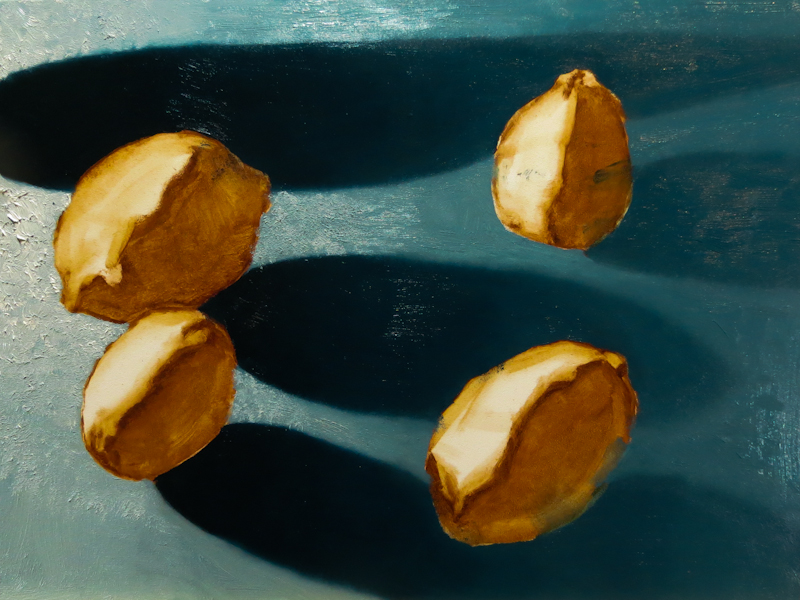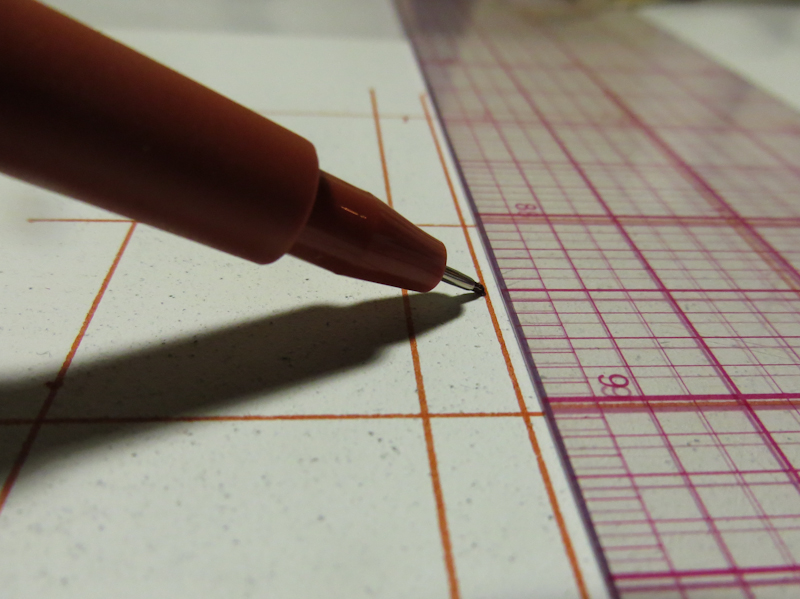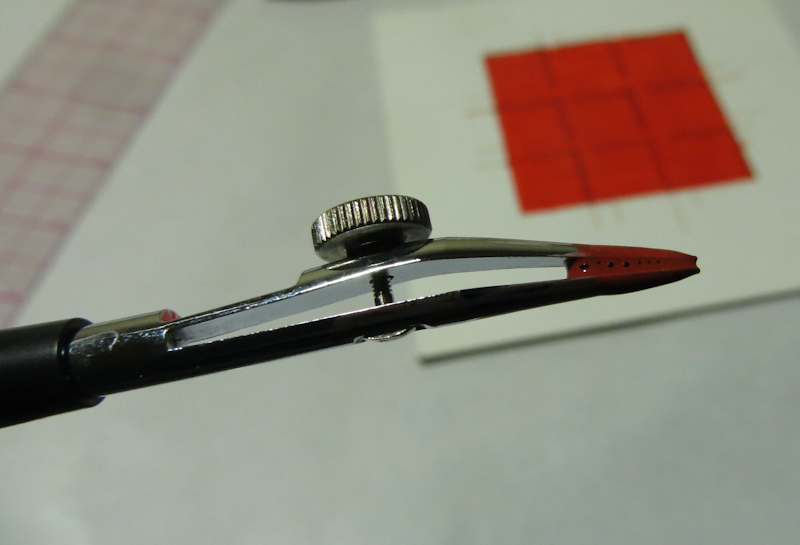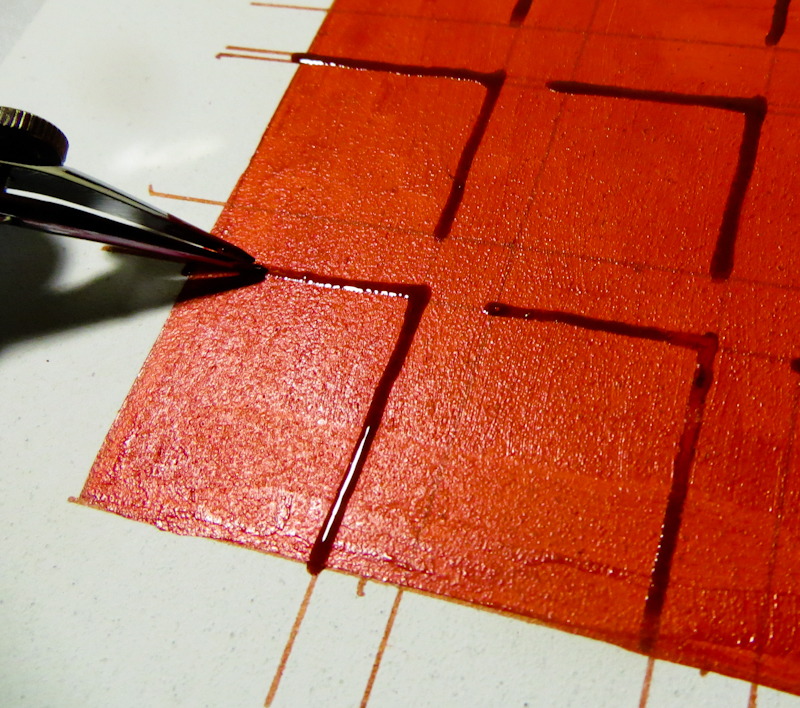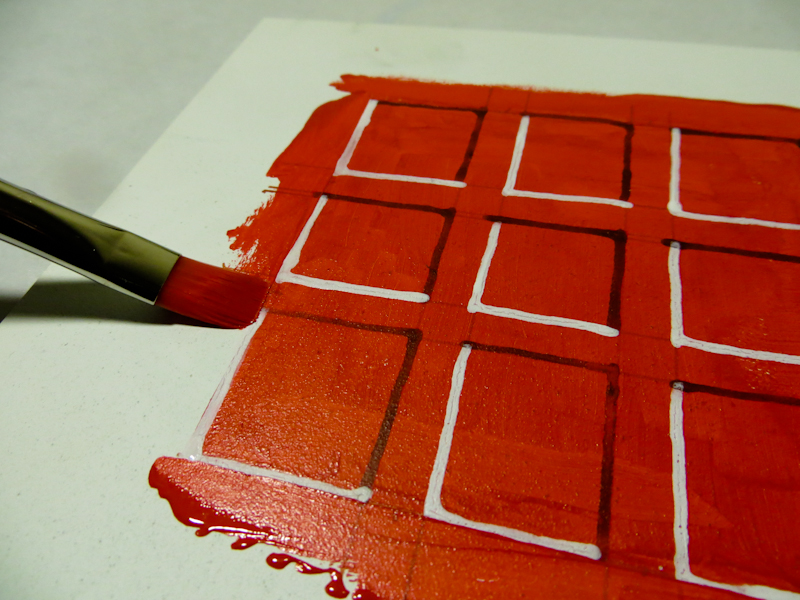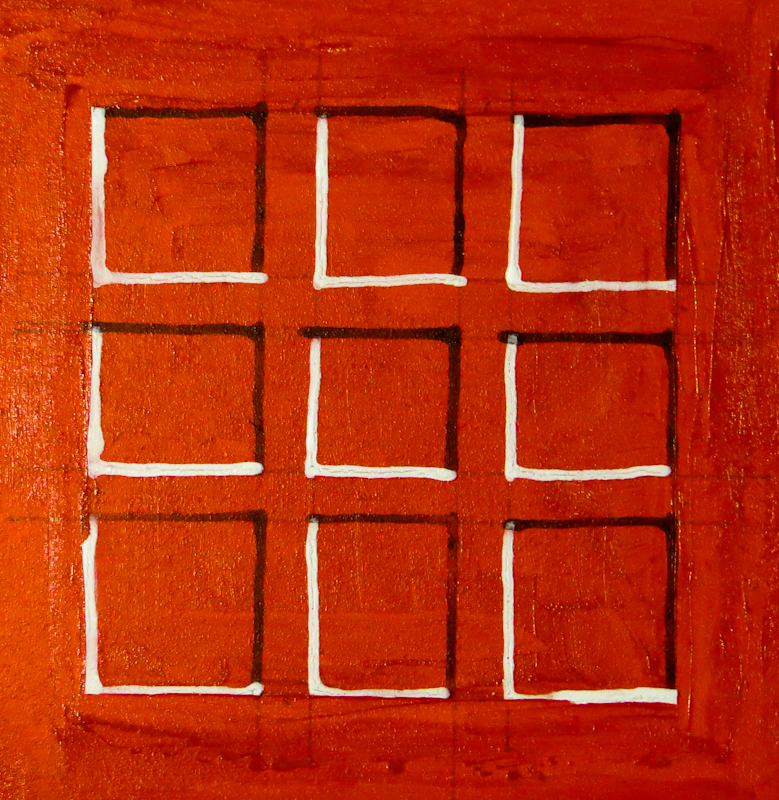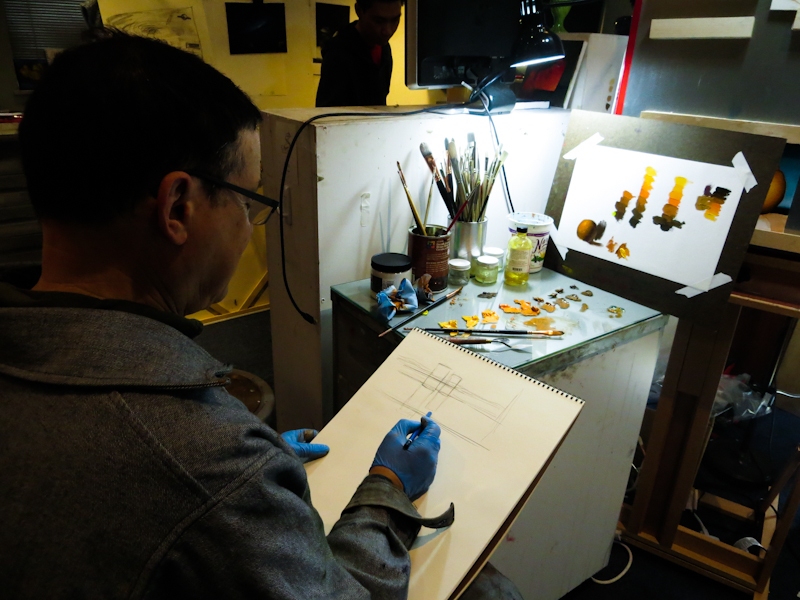I’m working up some new print designs. This rim-lit portrait would make an excellent linocut!
May 3, 2014
Finished One!
I just finished this 8″ x 8″ painting for the Maple Valley Arts Ten-Twenty-Forty show.
April 30, 2014
I finished the last two oranges and then started another 8″ x 8″ painting for the Maple Valley Arts Ten-Twenty-Forty show. Now I just have to paint a bunch of reflections and table tops, and two lemons and two limes.
Drawing the Features of the Head
Gary was on a roll tonight drawing and lecturing on features of the head.
Isamu Noguchi and Qi Baishi: Beijing 1930
Today I saw the Isamu Noguchi and Qi Baishi show at the Frye. The line and brush drawings are amazing, especially the ones that combine a large brush gesture with a fine contour drawing. Reminds me a lot of the Matisse drawings at Chapelle du Rosaire de Vence. Well worth seeing. Runs until May 25.
April 23, 2014
April 22, 2014
I finally got around to painting the background for my lemons and limes painting. This time I’m trying to give the shadows a more nuanced treatment where they start sharp, crisp and dark on the left near the light source, and then feather out and become lighter as they move to the right. At the same time, the background transitions from light on left to mid-tone on the right.
It looks great, but the thing that really excites me is the paint texture. I kind of stumbled on to it – as I was trying to lighten up the left side painting, I accidentally left some globs of Titanium White on the surface and they looked really good so I added some more.
The textured paint makes the light seem even brighter and I think it will harmonize nicely with the textured paint that I plan to use for the lemons and limes.
Architectural Details
Tonight I experimented with a ruling pen to paint architectural shadows and highlights. My goal was to paint something that looked like a garage door with nine recessed rectangular panels. I used acrylic paint, instead of oils, so that I could quickly dry each layer before proceeding.
I found the ruling pen easy to use for lines from 1/16 of an inch down to the smallest hairline. The pen requires thin paint – about the consistency of half and half. After diluting the acrylic paint with water I found it had become nearly transparent. This wasn’t a problem for the test, but might be a bit constraining in a real painting. I also tried diluting the paint with Golden Self Leveling Clear Gel, but this was too thick for the pen.
I think the ruling pen will be good for things like powerlines, strands of hair, and sailboat rigging. It seems to work well for architecture, but I want to compare it with a liner brush and with the technique where, instead of painting the line, you paint the areas around it.
It will be interesting to see how the ruling pen works with oils.
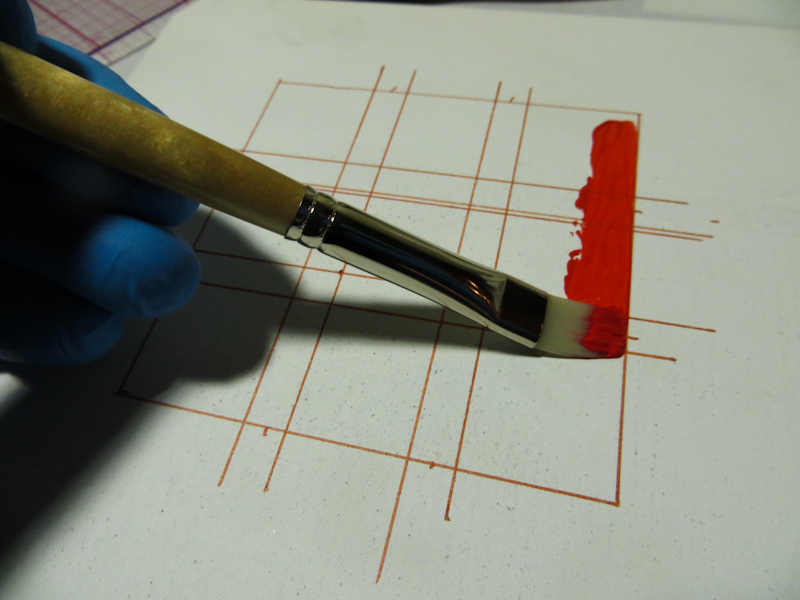
I let the guidelines extend beyond the bounding rectangle so that I would be able to locate them after applying the first layer of paint.
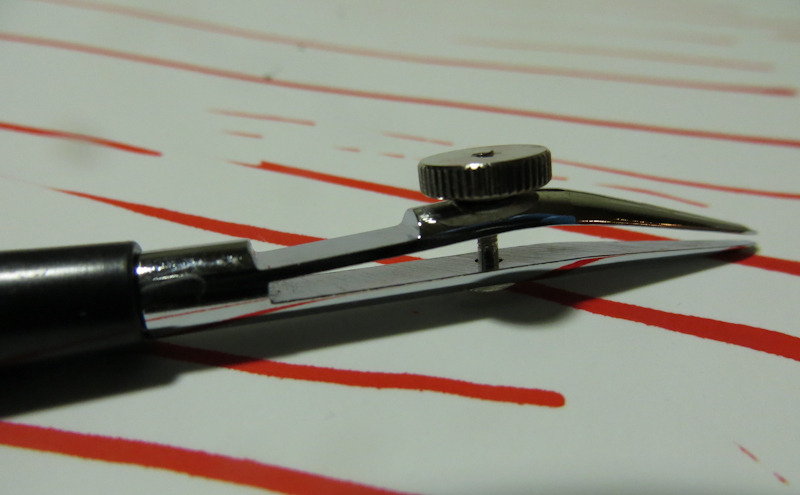
I used a ruling pen to make narrow straight lines. The ruling pen has two prongs that hold ink, or in this case, diluted acrylic paint, between them. The thumbscrew adjusts the spacing between the prongs which sets the thickness of the line.
Art is always visual
One of the cool things about art school is that the instruction is fundamentally visual. Years ago when I first attended Gary Faigin’s class on perspective, I was delighted to find that the entire lecture was conducted in drawings. Sure Gary spoke to us, but for the entire 90 minutes he was also drawing with charcoal and chalk on a giant, 4′ x 8′ piece of sheetrock, continually morphing the image from one scene to another as he made different points.
I was thinking about this recently in crit as Gary painted an orange to illustrate brushwork and then grabbed my sketchbook to make a point about eye level.
It makes complete sense that writing is taught with words and art is taught with images, but I am still surprised and delighted every time I get to see a demo.

